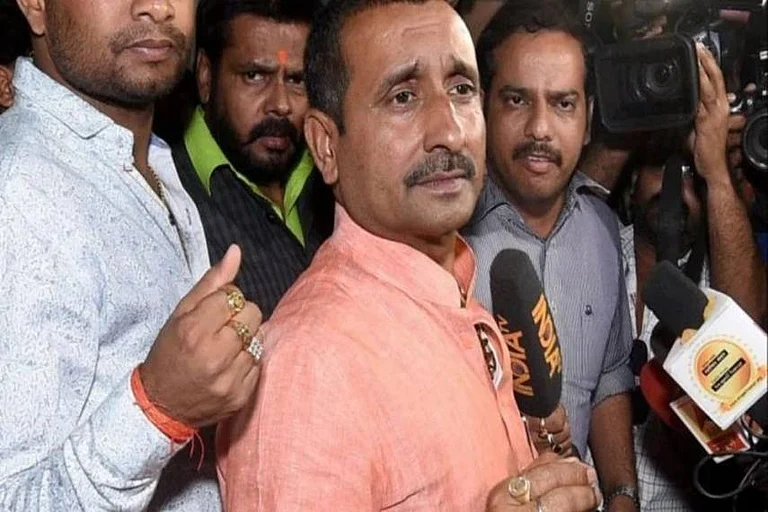IT happened at dawn. Five masked men got down from two Maruti cars outside 170/2, Picnic Gardens Road, a working class neighbourhood in south-east Calcutta. Once they sneaked in, the men moved silently, to a plan. Three of them took up positions at specific points while two went to a rear room. The flimsy door was easily broken open. The Sikh couple sleeping inside were riddled with revolver shots fired at close range. The men bundled the still warm, bleeding bodies in bedsheets and loaded them into the waiting Marutis, which sputtered to life and sped away. The operation was over in minutes. The date: May 17, 1993. The time: 4.45 am.
It could have been the perfect crime, ruthlessly executed, without any trace of either the victims (identified as Laxmi Singh and wife Rani Singh) or the weapons, or any lead on the identity of the attackers. It could have been just another gruesome incident involving rival terrorist gangs of Punjab. Or so people thought initially.
But there were interlopers in the plot. The elderly Ranibala Naskar and her son Mihir, who lived in the same complex, woke up at the wrong time for the assailants. Their testimony and later accounts from other people started a tortuous trail of investigation that finally ended with a formal chargesheet against five members of the Punjab police, who are scheduled to go on trial this March for the double murder.
Mrs Naskar, 75, told Outlook : "I was awakened by what sounded like Diwali crackers exploding. I had barely stepped out of my room when, suddenly, a man waving a revolver materialised from now-here, and motioned me away. I told him in Bengali that I wanted to go to the bathroom (which is to the rear of the compound). But he only repeated his gesture angrily. Then I called my son Mihir...I just didnt know what was going on."
At this stage, the thread of the story is picked up by Mihir, an employee of the state health department. "As soon as I started to step out, a man came in and just pressed his revolver into my chest, without a word! I was barely awake and all this was happening. I was pushed inside and the door was bolted. All this while, no one spoke a single word. Their faces were covered, but they didnt look like Sikhs."
The police recovered some spent cartridges, bullet heads and wrappers from the site, indicating that at least two automatic/ semi-automatic fire arms were used. T h e re were eight gunshot holes in the walls. Six bullets were picked up along with a blood - splattered shirt, indicating that the male victim had taken at least 10 bullet hits.
A state police official involved in initial investigations said the clockwork precision and the ruthless professionalism of the killings ruled out, in the eyes of probing officials, any possibility of this being just another inter-gang killing. "Something seemed different, something was odd. Calcutta, we knew, often sheltered Sikh extremists, but this was a well-plotted hit," he said.
The Calcutta officials got wind of the possible involvement of the Punjab police in the murder from their intelligence sources. These were days when desperate remedies, rough, ready and homespun, were being adopted in Punjab to combat terrorism. An indignant West Bengal government took up the issue but the Punjab authorities initially denied any involvement.
Meanwhile, the complexities of the case led officials to hand it over to the state CID from the jurisdiction of the Tiljala police station, where Mihir had filed his FIR. As the two states continued to bicker this was not the only instance where Punjab police personnel had carried out business in West Bengal without any reference to local authorities the CBI took over the probe.
After detailed inquiries in Delhi, Punjab and other places, the CBI narrowed its focus to five men Sant Kumar Singh, then SP (operations), Bhatinda; Sukhdev Singh Chahal, DSP, Talwandi; head constables Ram Dayal and Sukh Jeevan Singh; and constable Darshan Singh. It appeared their mission was to eliminate the Sikh couple who had come to Calcutta in January that year. And yet, there was more to it.
A subplot, involving treachery and intrigue, came to light as investigations came to a climax. One Basir Ahmed, son of Ali Mohammad of Bhammekalan village, Bhatinda, was once a Punjab police constable. On October 12, 1991, Basir allegedly deserted his post with his service weapon, a revolver. The Punjab police registered several cases against him. Sources there allege that after his desertion, Basir committed a number of crimes, including murder, and later turned a hardcore terrorist himself. His name figured in the list of terrorists. In January 93, it was Basir and his wife Sakina Begum who had come to Calcutta and rented a one-room apartment at 170/2, Picnic Gardens Road. The fugitive couple assumed a Sikh identity, registering as Laxmi and Rani Singh, and moved into their apartment in February.
From Punjab, there is no report as to how the couple was traced to Calcutta. "Its not an easy task to track down a person who changes identity a thousand miles away from home, putting up in a small hole in a city of millions in an alien environment... the killers did their work meticulously," said local police officials.
The CBI ascertained that the accused, led by Sant Singh, had taken firearms and walkie-talkie sets from the Punjab police on their deadly mission. Starting on May 14 from Punjab, they travelled in a helicopter to avoid detection and arrived in Calcutta via Lucknow about 11 am on May 15. On May 18, a day after the deed was done, Sant Singh went back to Punjab in a chopper, with an engineer co-passenger. His companions hit the road in the Maruti cars.
Slowly, more evidence piled up. Ballistic reports showed that the spent cartridges recovered from Picnic Gardens were fired from arms issued in the name of Sant Singh and others. One .38 revolver was in the possession of Sant Singh and another with DSP Chahal. The bullets, too, matched. Again, the name of Basir Mohammed suddenly disappeared from the list of Punjabs hardcore terrorists in May 93.
The chargesheet drawn up by the additional sessions judge at Alipore, Tapash Ghosh, says: "The presence of the accused at the scene has been established by circumstantial evidence. It is true that there is no direct evidence...as the dead bodies could not be recovered." This took into cognisance the defence argument that there was no incriminating material. The judge ruled that "strong suspicion which leads the court to think there is ground for presuming that the accused may have committed an offence" was enough. The five were charged with murder and criminal conspiracy.
Loose ends, obviously, abound. For one, what happened to the bodies? Again, why was Sakina Begum killed along with her husband? The Punjab police may not come up with the answers in a hurry.






















